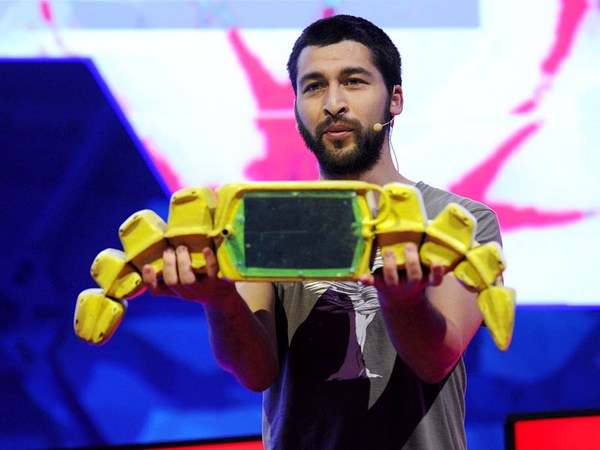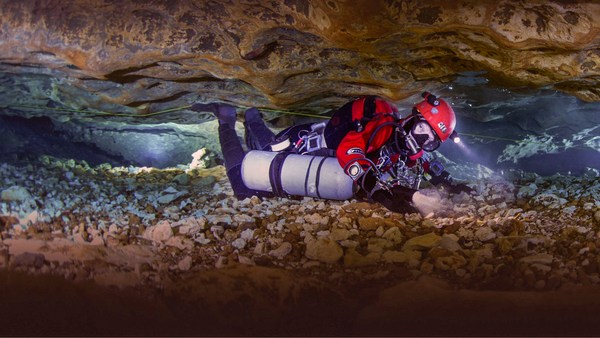(Aquatic noises)
So this video was taken at Aquarius undersea laboratory four miles off the coast of Key Largo, about 60 feet below the surface. NASA uses this extreme environment to train astronauts and aquanauts, and last year, they invited us along for the ride. All the footage was taken from our open ROV, which is a robot that we built in our garage.
So ROV stands for Remote Operated Vehicle, which in our case means our little robot sends live video across that ultra-thin tether back to the computer topside. It's open source, meaning we publish and share all of our design files and all of our code online, allowing anyone to modify or improve or change the design. It's built with mostly off-the-shelf parts and costs about 1,000 times cheaper than the ROVs James Cameron used to explore the Titanic. So ROVs aren't new. They've been around for decades. Scientists use ROVs to explore the oceans. Oil and gas companies use them for exploration and construction. What we've built isn't unique. It's how we've built it that's really unique.
So I want to give you a quick story of how it got started. So a few years ago, my friend Eric and I decided we wanted to explore this underwater cave in the foothills of the Sierras. We had heard this story about lost gold from a Gold Rush-era robbery, and we wanted to go up there. Unfortunately, we didn't have any money and we didn't have any tools to do it. So Eric had an initial design idea for a robot, but we didn't have all the parts figured out, so we did what anybody would do in our situation: we asked the Internet for help. More specifically, we created this website, openROV.com, and shared our intentions and our plans For the first few months, it was just Eric and I talking back to each other on the forums, but pretty soon, we started to get feedback from makers and hobbyists, and then actually professional ocean engineers who had some suggestions for what we should do. We kept working on it. We learned a lot. We kept prototyping, and eventually, we decided we wanted to go to the cave. We were ready.
So about that time, our little expedition became quite a story, and it got picked up in The New York Times. And we were pretty much just overwhelmed with interest from people who wanted a kit that they could build this open ROV themselves.
So we decided to put the project on Kickstarter, and when we did, we raised our funding goal in about two hours, and all of a sudden, had this money to make these kits. But then we had to learn how to make them. I mean, we had to learn small batch manufacturing. So we quickly learned that our garage was not big enough to hold our growing operation. But we were able to do it, we got all the kits made, thanks a lot to TechShop, which was a big help to us, and we shipped these kits all over the world just before Christmas of last year, so it was just a few months ago. But we're already starting to get video and photos back from all over the world, including this shot from under the ice in Antarctica. We've also learned the penguins love robots. (Laughter)
So we're still publishing all the designs online, encouraging anyone to build these themselves. That's the only way that we could have done this. By being open source, we've created this distributed R&D network, and we're moving faster than any venture-backed counterpart. But the actual robot is really only half the story. The real potential, the long term potential, is with this community of DIY ocean explorers that are forming all over the globe. What can we discover when there's thousands of these devices roaming the seas?
So you're probably all wondering: the cave. Did you find the gold? Well, we didn't find any gold, but we decided that what we found was much more valuable. It was the glimpse into a potential future for ocean exploration. It's something that's not limited to the James Camerons of the world, but something that we're all participating in. It's an underwater world we're all exploring together.
Thank you.
(Applause)





